Purebred Nudie two tooth ewes
Are we farming on the same planet??
Pierre Syben visited the Stirling sheep market in Scotland on July 18. “Good cull ewes made up to $NZ460, poor ewes down to $220. Some of these ewes are 90kgLW, BelTex cross which probably kill out at 45–50kgCW. The strong demand for kebabs pushes up mutton price. It is estimated that there are now seven million Muslims in the UK.
There were around 7,000 prime lambs sold. These are all weighed on arrival. Average live weight was 42-43kg. The top price for 52kgLW lambs was $380”.
Wasn’t the UK our biggest sheep meat market for 130 years?
Schmallenberg disease played havoc in English flocks in 2023-24, so lamb supply is significantly down. And there has been a big drop in the number of ewes because of the shockingly wet winter and the high price for mutton. Older tenant farmers saw an opportunity to vacate sheep farming, so sold all breeding stock.
“Sheep farmers are being affected by Brexit, subsidy reduction, inflation, higher interest rates and less willing bankers. So, wrapping up, the only profitable sheep farmers in Britain long term will be those with low cost of production.” (Ian McDougall, Farmgene Ltd)
Demand and supply
Muslim families in France average 8 children in contrast to the average French family of 1.6. Around the world there are Muslim populations getting wealthier, in the Middle East, Indonesia, Europe. Demand for sheep meat is moving in our favour. Red meat demand overall is increasing, as the global middle class expands.
China became our biggest market for lamb in 2016. The “China premium” of around $40 came from the much higher value paid for parts of the carcass which used to be rendered, eg, brisket, flaps, pizzle. China takes 96% of the carcass rather than 73%, leaving little for rendering.
Globally sheep numbers are falling. That will swing in our favour too, when numbers stabilise. A recent podcast, Red Meat Revelations, by Australian global analyst Simon Quilty, has good news for us. Quilty says that the average “trade lamb”(20–22kg) price in Australia was $A7.30/kg this past season. He predicts $8.60/kg for 2025, $10 for 2026, $10.50-11.00 for 2027. Australia is now the biggest global exporter of lamb, so Australia tends to be the price setter, not New Zealand.
His prediction on costs is that Australia has a pattern of ten years of rising costs, then seven years of stability… 2026-32 will be a stable phase.
Quilty also commented on climate change. Widespread droughts have led to liquidation of cattle around the world. As herds and flocks rebuild there will be a shortage of red meat. India has around 110 million buffalo. Buffalo meat is the cheapest beef globally. The price of buffalo meat has been rising over the past year, creating the opportunity for Brazilian beef to sell into markets other than China and USA. A rising tide carries all boats.
Conclusion
- Product prices are rising for sheep meat, beef, wool.
- The New Zealand dollar is depreciating, which will further increase farm gate prices.
- Supply/demand: Global sheep numbers are falling.
- Competition for land use is reducing the global supply of red meat.
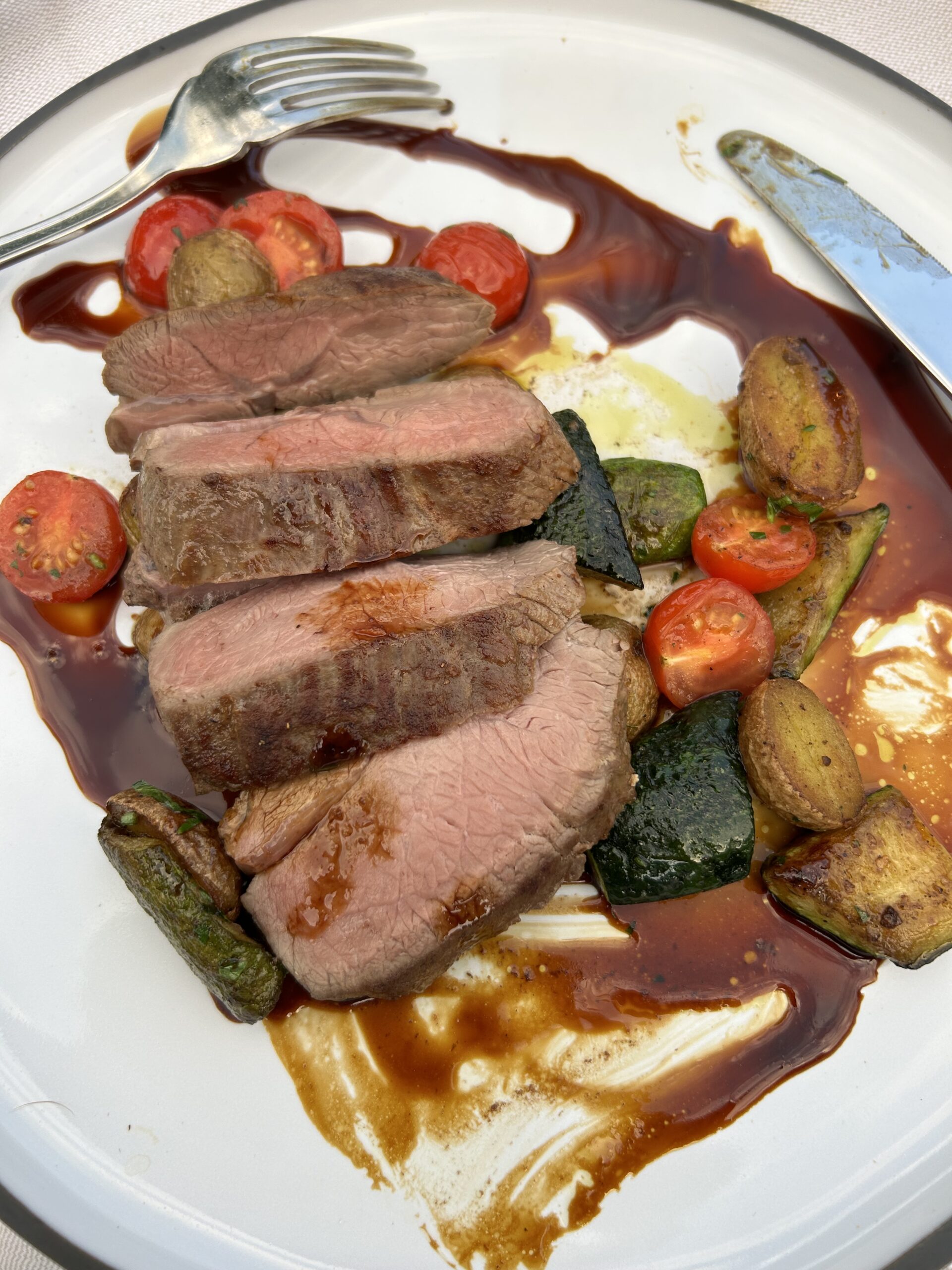
New Zealand lamb in Switzerland. A $70 meal, but worth every dollar
Getting more from less
Pierre Syben reporting from Europe
I’ve been fortunate to spend July in the Northern Hemisphere thus avoiding the cold of the NZ winter… unfortunately it has rained nearly every day!
I’ve been lucky to visit a number of really great businesses ranging from an online organic-only vegetable delivery business that in 1986 started with one man selling organic veg out of a small van to today delivering in excess of 70,000 boxes @ an average of £28 ($65) weekly, do the sums!
I’ve of course visited a number of sheep and beef farmers, who unlike us have had record prices for beef, lamb & mutton but an absolute winter from hell!! Some farmers have recorded 2 metres of rain in 6 months, well up from the normal 900mm annually.
However the visit that really made an impression on me & has given me the title for this article “Getting More From Less” was a visit to Northern Ireland dairy farmers Nigel & Elaine Weir from Rathfriland, a bit south of Belfast.
I’ll forgive you for thinking at this point, what’s this got to do with Sheep farming in NZ? Hopefully like me you’ll understand the relevance.
Four years ago Nigel & Elaine were facing lower product prices and increasing costs (sound familiar?). The first & most obvious option available was to purchase another 20/30 cows & simply increase production from the land available. Having had a completely closed herd for many years they thought what other options could be worth considering?
The farm, which is on a main road between two villages and has hosted school visits on farm for many years, made them think, how can we get closer to our customers?
What came about was an investment of £100k ($240k) in a couple of small sheds with cashless vending machines selling coffee with slices, fresh & flavoured bottled milk, hard frozen tub ice cream & the real money earner, soft whipped ice cream. It’s all paid on card & the machines are all easy to use touch screens that operate 24/7.
Nigel said the whole thing was a bit of a punt & most neighbouring farmers thought they were mad. On the opening weekend the first day turned over £1000 ($2400). Nobody was laughing then!
Nigel and Elaine said that the biggest thing for them was it made them think more about their business & think more about their customers, some of whom come daily!
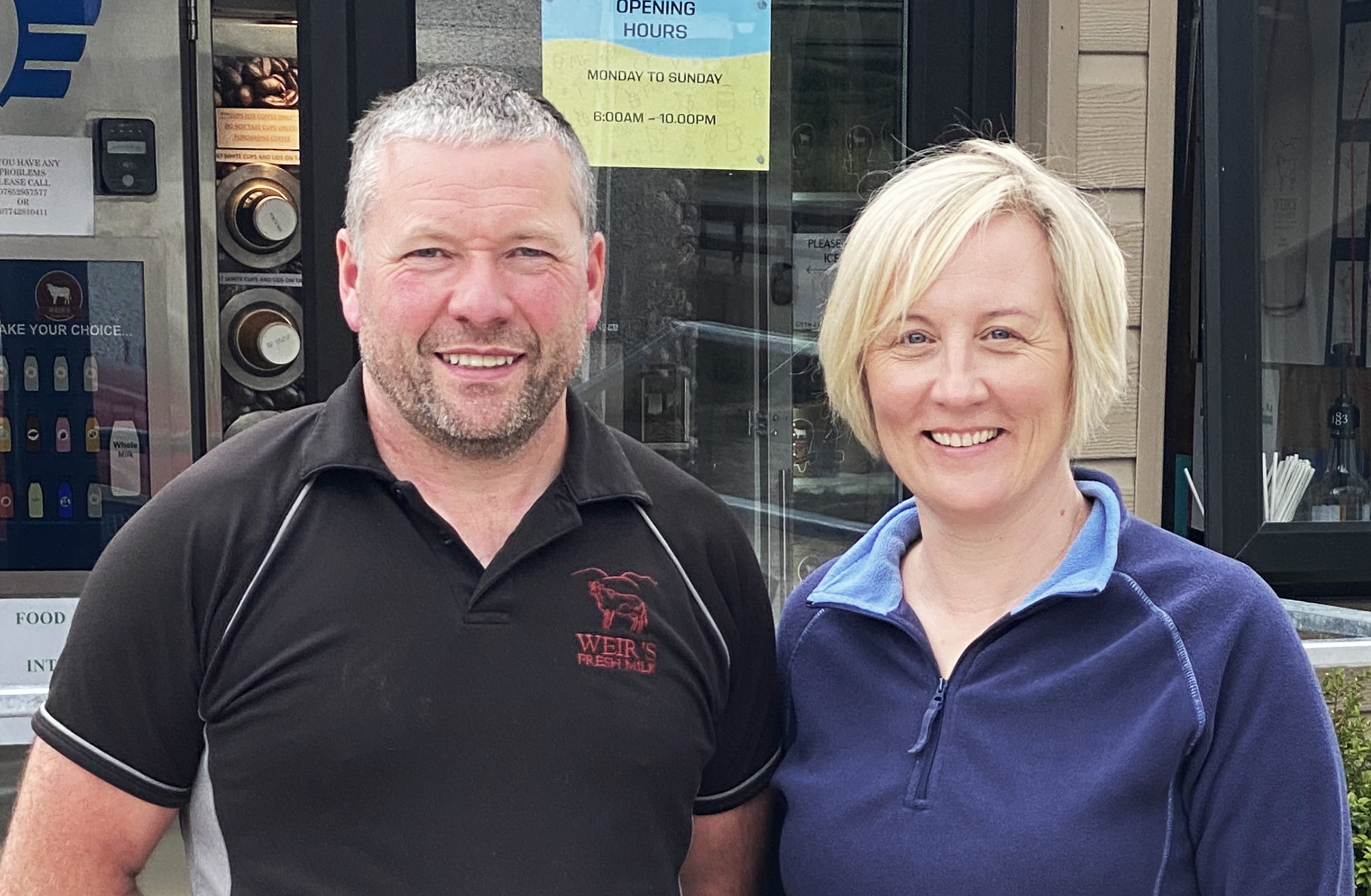
Nigel & Elaine Weir Rathfriland, Northern Ireland.
One of the things this has done is protect them from adversity. Recently they lost 41 cows (20% of the herd) with TB. As they told me of the day they loaded the cows on the trucks for slaughter, many of them among the top in the herd, I could see the emotion & in fact felt it myself. They were quick to regather and said that what this decision four years ago had done was secure themselves financially.
As I drove out the gate I thought, what a great story& how could this be related to our clients?
The investment for you of $240k building shops at your front gate bears no resemblance whatsoever of course, but “Doing More With Less” is something we’re all going to have to get our heads around.
Nearly all hill country farmers, certainly on the east coasts, have fewer ewes, a lower scan & either fewer or no hoggets mated.
I remember Derek telling me years ago that if you can reduce spending by 10% & increase turnover by 10% you’ll increase your nett by 50%. Hard to do with fewer numbers but it is possible by selling what you have better. Either way it’s a good exercise for any business to do, particularly after a year like we’ve just had. We’re trying to avoid 2024/25 having the red ink like most of us had in 2023/24.
The relevance as I saw with Nigel & Elaine was to think more about how we sell our products, the relationship we have with our meat companies & in turn our customers. Can we achieve better prices by signing up to any of the many programs available? Atkins Sheep Ranch is the first that comes to mind, but most companies have something.
It could be something as simple as doing more body condition scoring while the ewes are through the yards.
Using GPS on fertiliser application is proven to be a better use of annual fertiliser application. There are companies with this technology, why wouldn’t you use it?
The list goes on & on but I suspect could easily add up to the 10% for either side of the equation.
So what else have I learnt worldwide? Sheep numbers are DROPPING! A number of industry pundits in the UK are telling me when the figures come out for 2024 they’ll shock most with a 10% drop in the UK flock predicted & they think that will be the annual reduction rate for the next few years.
I completely concur with Derek that in terms of sheep meat prices in particular we’ve seen the bottom. Sharp drops like we’ve experienced in the last year are often followed with quick recovery.
For the first time in history it’s predicted that some of the world’s major beef producing countries, US, South America & Australia, are all in 2025 going to head into herd rebuilding, all this while sheep numbers continue to fall.
This will have a significant effect on the availability of red meat proteins.
As Derek said we can only look on with envy at UK farmers receiving $300 to $400 for lambs & cull ewes, but the positive I take from that is “somebody paid that & they’re still paying it!”
Our turn’s coming I think, I can smell it!
We need to hang in there and remember that old saying… ”when everyone’s going east young man… go west!”
When the lift comes… and it will!…. you need to still have the numbers & be ready to take advantage of the opportunities that will present themselves!
What can we learn from dairying?
The latest technological improvements have Forbes Elworthy of Craigmore Sustainable and veteran farm consultant Will Wilson agreeing that the potential return on capital for dairying has risen from 5% to 8.5%. Dairy land prices stagnated between 2013 and 2023 and have now sunk lower because of the spike in interest rates. They see potential to farm another million hectares in dairying, given the substantial improvements in environmental outcomes. “This would be a major growth engine for the New Zealand economy”.
A recent scientific paper by Drs Jacqueline Rowarth and Graeme Coles dismisses the idea that a cow’s urine patch is equivalent to applying a tonne of urea per hectare. They demonstrate that the nitrogen content is much less and just about all absorbed by pasture. The paper also highlights the potential remaining in New Zealand’s dairy industry. The average cow produces around 400kgMS per year, and the best cows produce 700.
They split the difference as 20% coming from better management, and 60% from more high quality feed, 20% from superior animal genetics. One estimate is that genetic improvement in the NZ dairy herd is 2.2% per year.
Feed
Pasture cuts at various sites around New Zealand over the past sixty years by AgResearch reveal that annual pasture production has been static or declining since the late 1980s. Contrast that with the yield improvements made with maize over the past forty years, a C4 plant which is being increasingly used for dairy cows. In May I organised a half day visit to Grasslands AgResearch with Paul Oliver of HnT Agrinomics. They had no magic bullet to offer, especially for “permanent pasture” on hill country.
Ten years ago AgResearch scientists held out a lot of hope for deep rooted white clover. They had a standout plant which they were very proud of, but it simply didn’t breed on.

52kg live weight lambs at Stirling Market, Scotland, July 18, $380.
Killing two birds with one stone
Willesden Farm, at the base of Banks Peninsula, had a field day for ram breeders in July, part of a two day conference organised by Beef and Lamb Genetics. General Manager of this 50,000su enterprise is Matt Iremonger. Willesden stretches from sea level beside Lake Ellesmere to 800 metres above sea level, and includes dairy and cash cropping.
From five years ago Matt sowed lucerne on 250ha of medium to steep hill country “just able to hold a tractor safely”. This is used for lambing 3,000 hoggets. When weaned in early January the rising two tooths weigh 70kg, and high lifetime productivity is guaranteed. The hill country lucerne enables finishing of nearly 8,000 lambs per year, 3,000 born onto it, and others come onto it for finishing. With 12,000 ewes tailing up to 155% and 3,500 hoggets tailing up to 80%, there are more than 20,000 lambs weaned.
This year winter spraying was done early, and early lambers are set stocked there at end of July, targeting a triple dip of growing lambs as fast as possible… with lambing hoggets next, then finishing lambs in the summer/autumn.
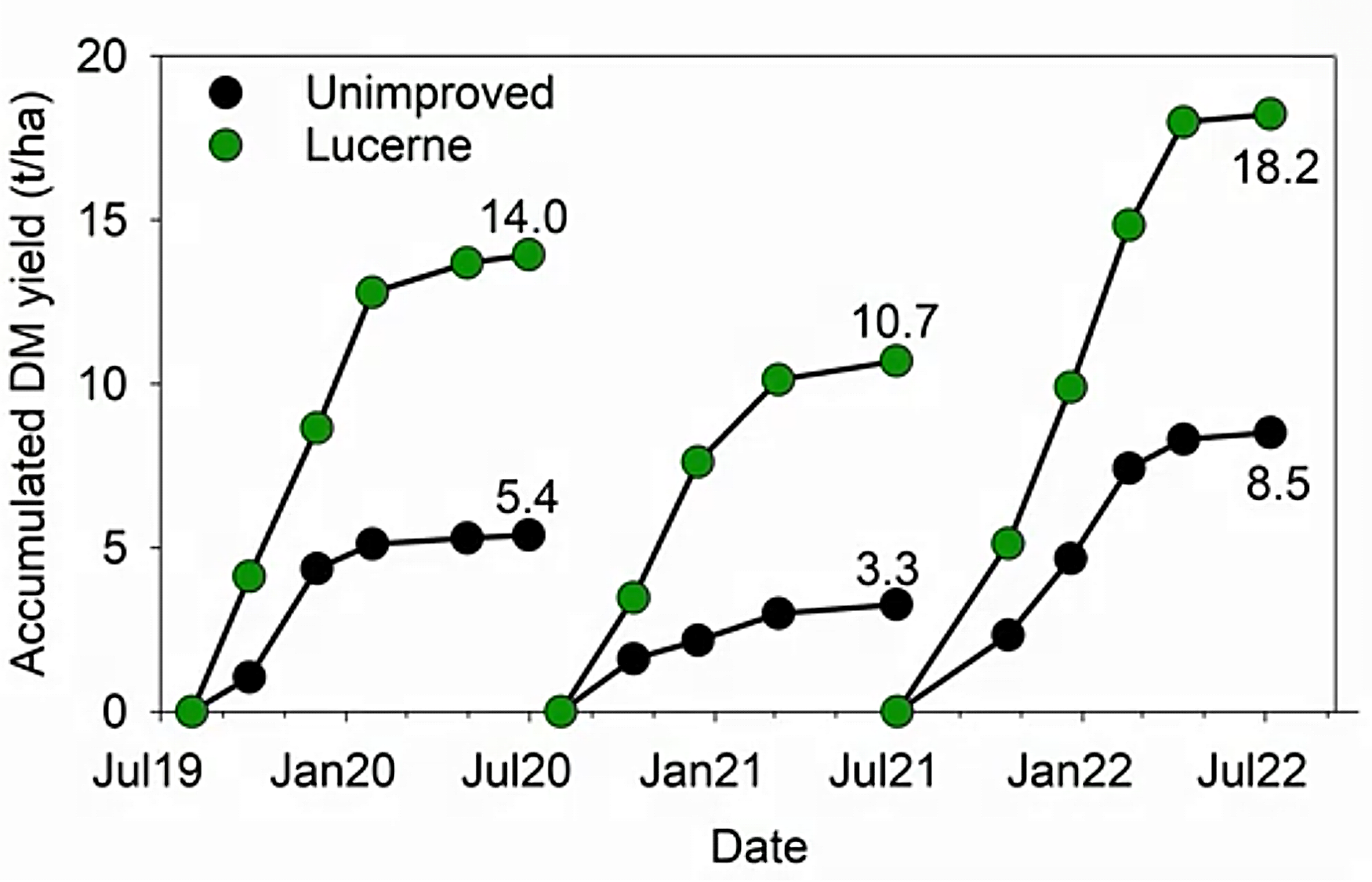
The superior growth of lucerne compared to resident pasture on hill country at Willesden Farms, Banks Peninsula.
Timing is important with lucerne, timing of grazing so it doesn’t get woody, and timing of both spelling and spraying.
Lucerne is a win/win for fast lamb growth, AND minimising internal parasite contamination of pasture.
Finishing lambs on hill country lucerne leaves irrigated land on the valley floor for dairy cows and cash cropping.
Willesden’s maternal genetics are a mix of Wairere twins from hoggets and Longdowns composites.
Resilient sheep
Wairere has practised unshepherded hogget lambing since 1966. This trait is bred into your Wairere flock. As is the renowned ability of Waireres to bounce back from a hard time.
Now we have another tool in the toolbox to reduce your work input and cost of shearing…
Nudies
Our experience to date, measuring Streaker (half Nudie/half Romney) performance against Romney is that Streakers have had an edge in growth rate pre and post weaning, and in hogget and two tooth scanning. Dagging is sharply reduced, and we didn’t have to shear 30% of the Streaker two tooths at nearly full wool (10 months). The path to non shearing sheep seems fast with these Nudies from the UK. A 3/4 Nudie may cut out shearing altogether. What’s not to like? We are expanding our Nudie flock fast.
But what about wool?
The deconstruction program is progressing well. The science is settled. There is a thirteen month delay in sourcing the specialist machinery required to operate a factory which will use around one percent of New Zealand’s scoured wool. If that works well, there will be investment in plant that will use up to 20% of NZ’s scoured wool.
A second aspect is getting commitment from a major textile company to stop using the current oil-based pigment carrier and convert to wool.
It will be several years before the deconstruction project reflects in a significantly higher price for wool at the farm gate. According to WRONZ chair Andy Fox, early rewards will accrue to those who invest in the manufacturing project. I hope that sheep farmers will own the processing.
It is very rare that a conversion process makes such a huge increase in value to a raw agricultural product. Pigment carrier sells for $20 to $200 per kg. Are Streakers the ideal halfway house for reduced workload, shearing once per year, and enabling you to go Nudie or breed back to wool?
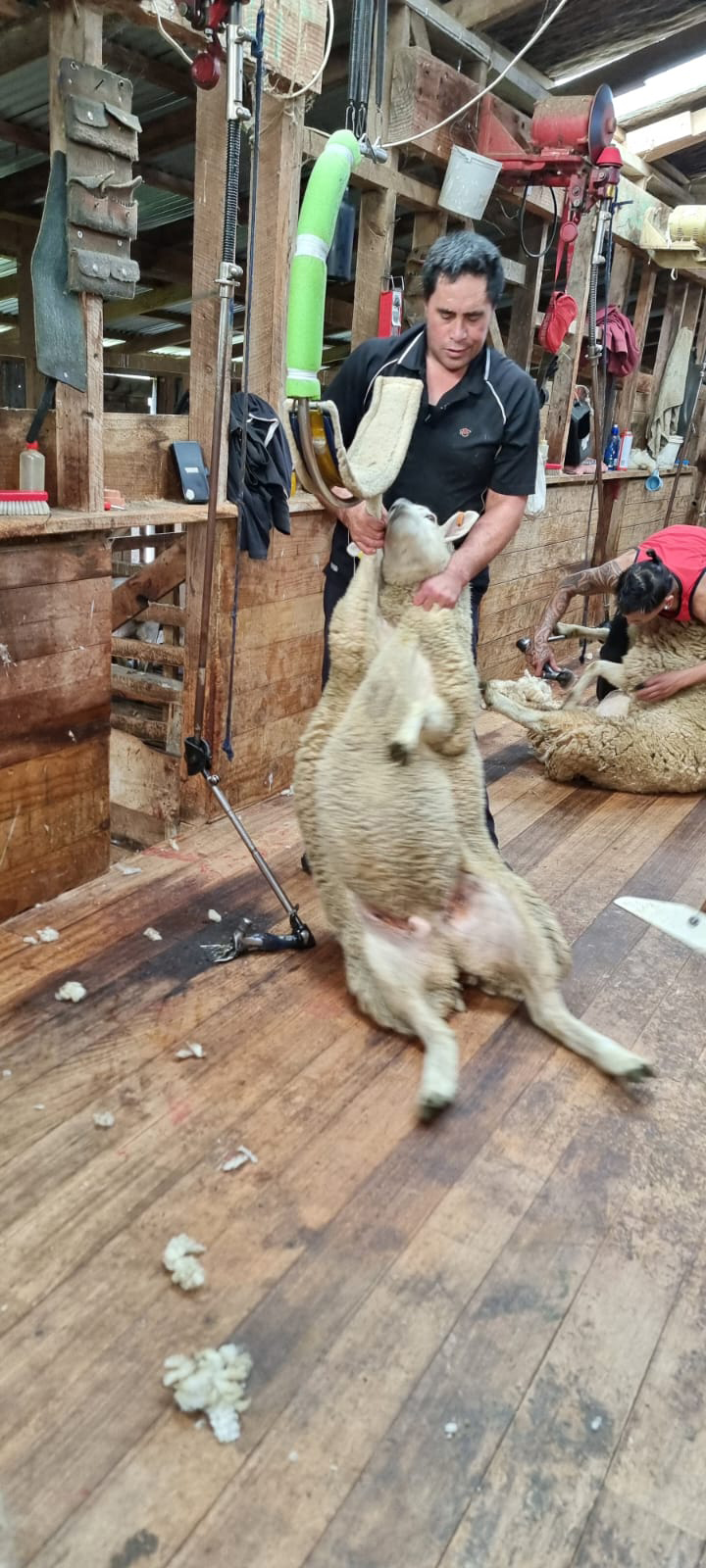
Streaker bellies that don’t need shearing.
Drought
Long dry periods always cost. Where do you take on that cost? It usually works out best to take the cost up front. If you can look after your capital stock, prices the season after the drought are usually higher than the year of the drought. This season’s drought was exacerbated by a poor spring in many parts of the country, with fewer lambs POM.
Over the past fifteen months Wairere has had half normal rainfall, with just 130mm for the five months December to April. Scanning has held up well, but sheep numbers are down.
The best antidote? Genetics which grow lambs really fast, and ewes which bounce back fast after a tough time.
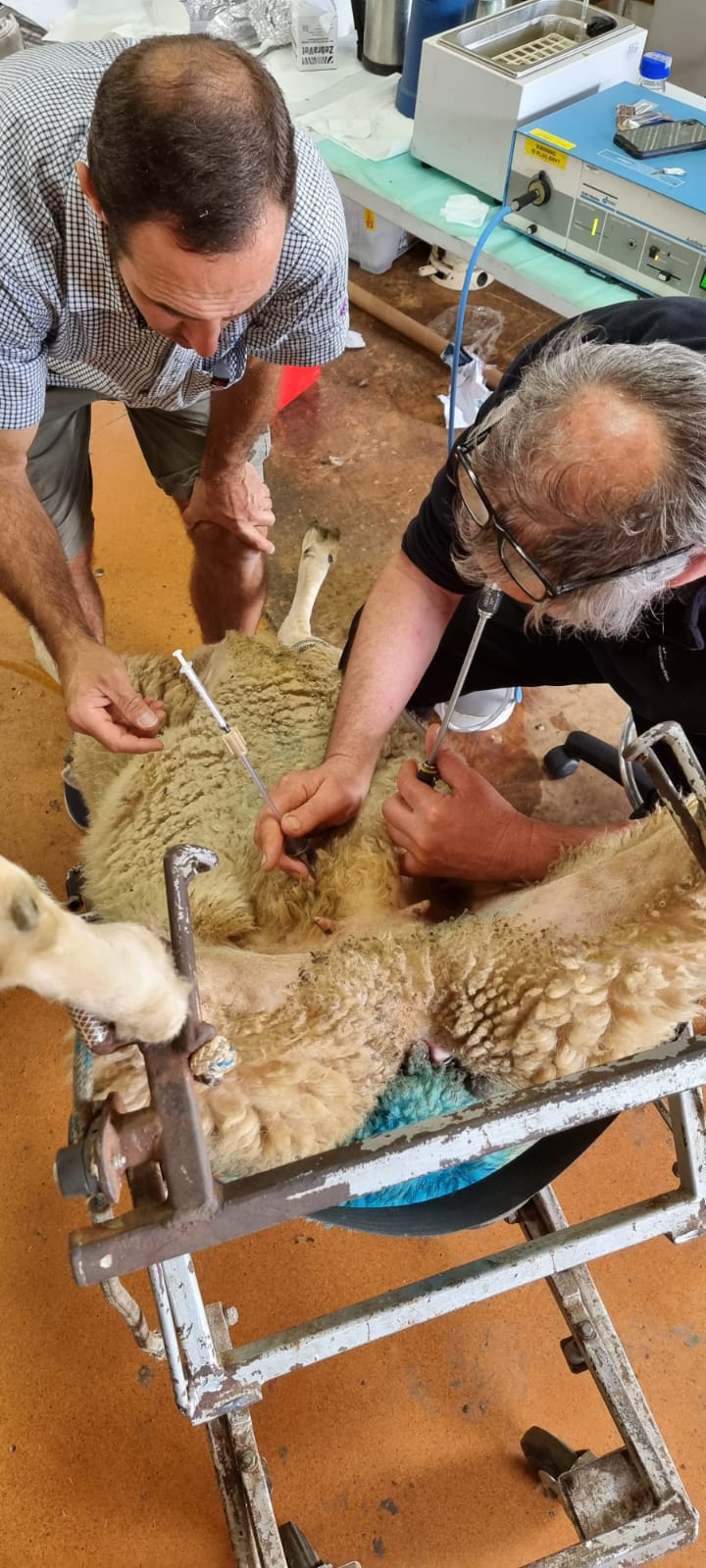
The third year of multiple ovulation embryo transfer, 620 Nudie embryos inserted this year.
Inflated land prices
The artificial construct of subsidised tree planting has cut off a natural business focus to increase scale and reduce unit costs. Those farmers who did compete for land purchase now find themselves saddled with a huge debt load. Meanwhile government, with 52% of Air New Zealand, pretends to be creating a sustainable New Zealand while undermining the country’s second largest export earner. As are lobby groups like Greenpeace who are interested in their own sustainability above all else. They raise funds by creating anxiety. Their best fund raiser ever has been anti GM.
So where are hill country land prices now?
Parasite resistance to drench
Resistance to triple drench has become widespread around NZ. How are Wairere’s top clients dealing with this threat, or potential threat?
- Nipping it in the bud. A high percentage POM dramatically reduces the number of lambs carried after weaning, so reinfestation of pastures with internal parasites is low.
- Recognising that a high protein diet, mother’s milk and legume, accelerates growth and helps a lamb’s immune system cope with a parasite challenge.
- Adapting to supply/demand of feed in a difficult season by selling stock if necessary, or providing supplementary feed. And selling some lambs store if necessary. Good decisions protect consistent high lambing percentages and high lamb growth before
weaning. - Body condition scoring.
Wairere’s history with effective drench started in 1963, with my father describing Thibenzole as Merck’s Magic Medicine. The spectre of drench resistance started to be recognised in the 1990s, when resistance to white drenches began to show up, and later to Levamisole.
Wairere was involved with two years of trial work in 1991 92 with Wallaceville. The conclusion was that the bigger the lamb at weaning, the better its rumen was adapted to pasture and to worms. For three years we practised long drench intervals, with just four drenches for ewe lambs and ram lambs in their first twelve months. However, we came unstuck with a Haemonchus outbreak in the third year. That combined with an autumn drought cost dearly, with a capital fertiliser input including 52kgN/ha getting us out of trouble.
Between 1998 and 2004 Wairere was involved with the Wairarapa Romney Improvement Group and the Auckland Romney Development Group in an AgResearch trial to discover genetics more resilient to parasites. There was no clear conclusion from this six year study, with no individual breeder having standout sires.
The question for me as a ram breeder was, “To what extent do I penalise growth in Wairere lambs and also pollute pasture with internal parasites to try to breed more resistant/resilient sheep”?
Internal parasites will always win, because they may breed up to fifty generations to one generation of sheep.
Dealing with parasites
Drench resistance is becoming more and more common. What is Wairere doing about this issue?
- No drenching of mixed aged ewes since 2005, twenty years ago.
- From 2005 there has been no drenching of two tooth ewes, bar three times, and a quarter of the mob in three drought years. Bear in mind that virtually all these two tooths were pregnant as hoggets, and lambed unshepherded on permanent pasture on medium to steep hills.
- Lambs are not drenched before weaning.
- We have adopted a policy of religiously following lambs with ewe mobs.
- We have started using the Carla test, which uses saliva samples from hundreds of lambs/hoggets to identify the immunity level of progeny groups, and of the Wairere flock. It appears that the flock at Wairere already has a good degree of natural immunity, with 76% ranking high. That’s not surprising. Lambs with better immunity are heavier and have a better BCS than low immunity individuals.
Mob grazing of both ewe and ram hoggets on hill country for many decades has indirectly selected for better immunity status.
The best counter to internal parasites is fast early lamb growth.
Client success stories
Tony Miller, South Otago: “Five years ago I was pleased with the weaning draft from my Texel/Romney ewes, but was having to do a lambing beat on the single scanned ewes 2-3 times per day. I vowed to make a breed change to let the ewes lamb themselves. Changing to Wairere Romneys achieved that in one cross. Now I go around the single lambing ewes once per week, just out of curiosity. We farm 4,800 ewes and 1,500 ewe hoggets on leased land. In May this year our local discussion group visited seven farms in the southern North Island, including Wairere. What struck us was that all our hosts used advisors to help optimise performance, and their use of trade animals to create flexibility in dry summers. It was refreshing to hear positive views on the future of the sheep industry. At Wairere we were surprised by the mob stocking of both ram and ewe hoggets on medium to steep hills, and the lack of feed after many months of low rainfall. Our visit sparked a wide ranging discussion about sheep breeding and future direction.”
Genetics advice
In late July geneticist Dorian Garrick had a day at Wairere. Dorian spent fifteen years in the USA, and had a big influence on the beef industry there. He was also instrumental in the design of the PW and BW indexes for the New Zealand dairy industry.
Dorian talked about the influence that AI, Artificial Intelligence, could have on our industry. For example, AI could quickly analyse a huge number of chemical formulations and molecule shapes to narrow down to a few that might be considered for use as a drug, perhaps also a new anthelminthic. This would represent a massive saving in time and cost.
A second theme that he discussed was how the big meat sectors, chickens and pigs, had smaller numbers of fully recorded animals in a breeding line than Wairere does as the largest ram breeder in New Zealand! He said that neither the New Zealand broiler chicken or egg laying sector is large enough to have a stand alone breeding centre. All genetics are imported. By contrast, meat processor JBS has recently purchased all the chicken industry genetics in the UK and Ireland. And sells a million fertilised eggs in the UK and to the EU every week.
International genetics companies are scaling up. A family owned German company supplies 70% of egg laying genetics globally.
Each of the five major broiler genetics companies will have 10-12 lines of around 3000 birds total, each bred for a specific trait or traits. Two lines are crossed together, then that first cross is bred to another first cross to get a four way cross which is then multiplied and sold to the commercial industry as fertilised eggs or day old chicks.
By having small numbers of recorded birds, a lot of money can be spent on genomics and trials to select the very best genetics. Enter Nudies at Wairere. Nudies give us another flock that we are breeding to deliver to you hybrid vigour and desirable traits that will make your sheep farming both easier and more profitable.
Re the acceptance of GE (gene editing) or GM (genetic modification) in New Zealand, he said the holdup is largely coming from Fonterra and Zespri. Imagine a perennial white clover which has genes from lucerne for deep rooting and triple the dry matter production of current clover cultivars in a year?
The sheep industry would benefit hugely from such a transformational change. Lifting quantity AND quality of pasture would realise current unexploited productivity in Wairere sheep genetics.
Why buy Wairere?
You will scrutinise every item of expenditure this year. Why buy Wairere rams? There are reasons why Wairere rams have been the most popular choice of NZ sheep farmers for more than thirty five years: They make your sheep farming easier and more profitable.
- The wairere premium If you sell say 200,000kg of weaned store lambs and get a ten cent premium for the Wairere name, that’s $20,000… enough to buy your Wairere rams for the year.
- The Wairere premium extends to the sale of surplus breeding stock, whether that be ewe lambs, two tooths, or cast for age ewes.
- We don’t get carried away about traits that make little difference to your bottom line, but are visible, eg, black spots on parts of the body not growing wool (even in your wool clip, the discount is negligible). We focus on the invisible traits that make you more money, like faster growth to weaning.
- Constitution. Mob stocking of lambs and ewes over many decades on medium to steep Wairarapa hill country has built in adaptability to a high stocking rate, and to shortage of feed in droughts and harsh winters.
- Ewe hoggets have all been mated since 1966, building in early maturity. Most years since 2005, only pregnant ewe hoggets have been retained.
- Hoggets have been lambed unshepherded on medium to steep hills since 1966, building in easy care.
- Wairere has continued to innovate to provide more choice for you. New options this year are:
- The Wairere composite, 1/4 Nudie 3/8 Texel/Finn/East Friesian 3/8 Romney…bred for minimal dagging, shearing once per year, power packed for growth.
- The Easidraft terminal, 1/2 Nudie 1/2 Dominator, no shearing required until at least eight months old.
- Two top Nudie rams have been mated to 200 Wiltshire ewes in February, a flock farmed in a hot FE area in the Waikato. We intend to offer the ram lambs from that cross in January 2025, in Te Kuiti or Taupo.
- We take pride in maintaining a close liaison with clients. With Andrew Herriott in Otago, Pierre Syben in the Wairarapa, and Warren Jones in Northland, we have New Zealand covered. Please contact us at any time.
- A global network. Pierre Syben has sold rams and farmed for Wairere in Australia and Europe, and is in regular contact with farmers and agents abroad.
Wish list
- All the red cones in New Zealand are burnt in giant bonfires and road construction costs are reduced dramatically.
- The retirement age is lifted immediately to 67, which will reduce the superannuation roll by 170,000.
- The 173,000 work ready unemployed will actually start working.
- Bureaucrat numbers will be halved across central, regional and district government.
- Stop the lies. Inflation has been much worse than official statistics show. In 1971 $3 per week was the food kitty for a student in a Wellington flat.
- Stop the hypocrisy of blaming farmers for 48% of NZ’s GHG emissions.
- New Zealand’s productivity index will improve fast, rather than going backwards.
- The exchange rate will drop by 25-30% so that the trade deficit becomes a surplus, the cost of imports curbs consumer spending, and exporters reinvest in their businesses.
- New Zealand and New Zealanders learn to live within their means.
- Sheep farmers enter a new era of high net profit!
Team cycling quote: ”You always make your gains on the uphill, not the downhill”
Wairere is here to help you on the uphill ride.
Derek & the Wairere team
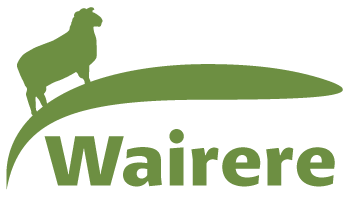
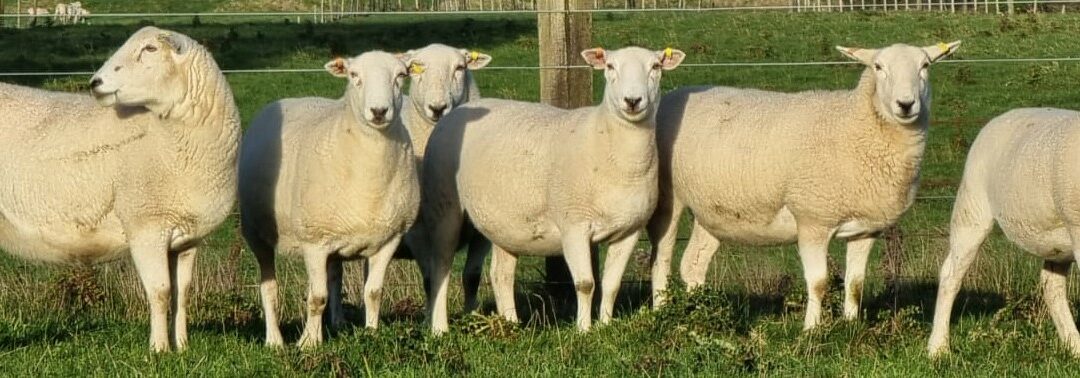
Recent Comments